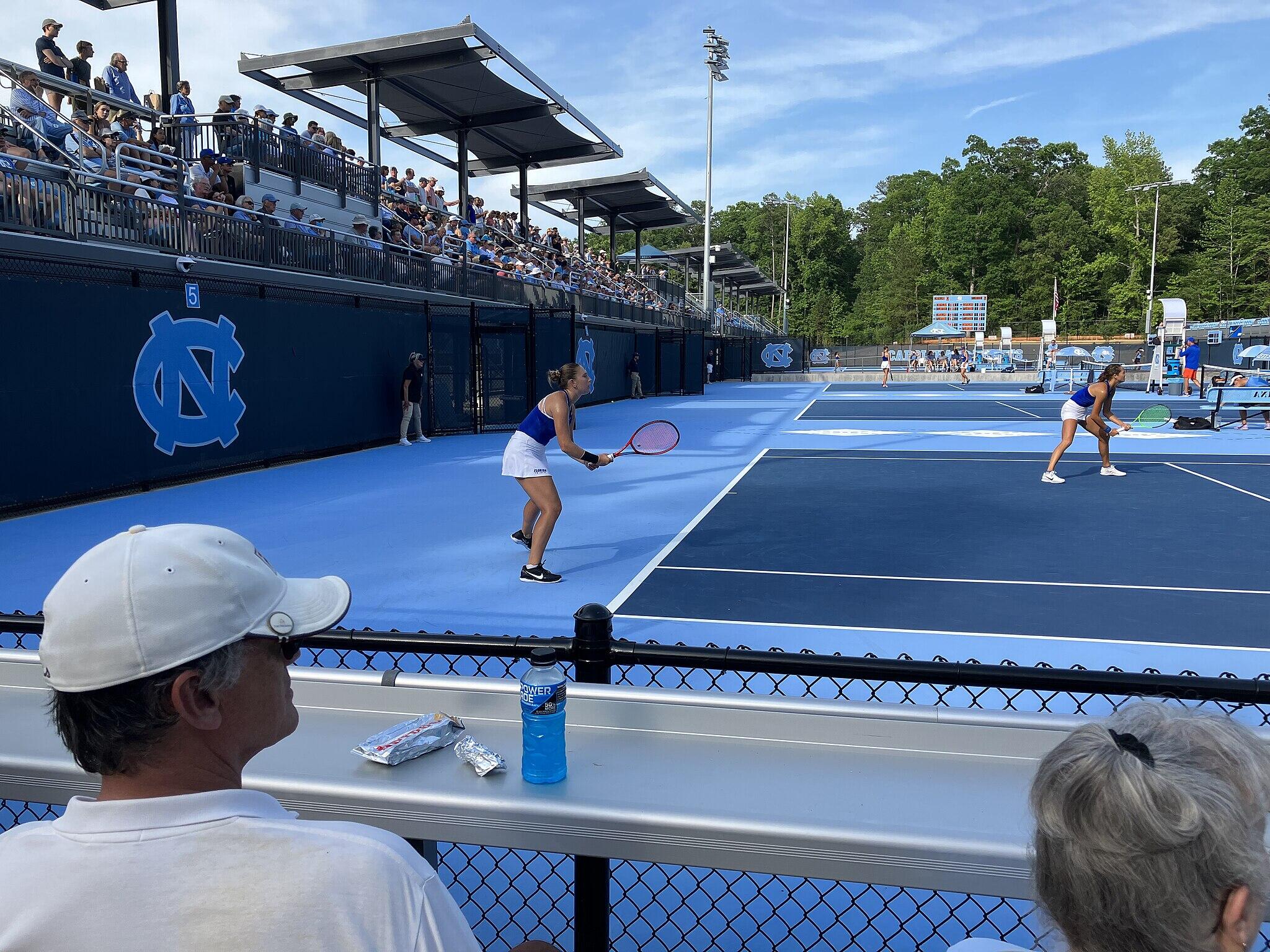In the world of tennis, there are several rating systems used to determine different information about players’ levels. Certain systems deal exclusively with men’s or women’s leagues, while others are applied internationally or only at a national level. Each country and each tournament circuit follows a specific rating system, so athletes can have multiple rankings under different systems. Learn more about the main tennis ranking systems around the world and find out which ones are the most common!
| System | Type | Where Used | Year Established | Highest Possible Rank/Score | Lowest Possible Rank/Score |
|---|---|---|---|---|---|
| National Tennis Rating Program (NTRP) | Rating | United States | 1978 | 7 | 1.5 |
| Universal Tennis Rating (UTR) | Rating | Global | 2008 | 16.5 | 1 |
| International Tennis Federation (ITF) | Ranking | ITF tours | 2019 | 1 | undefined |
| Association of Tennis Professionals (ATP) | Ranking | ATP tours (incl. Grand Slams) | 1972 | 1 | 0 |
| Women’s Tennis Association (WTA) | Ranking | WTA tours (incl. Grand Slams) | 1973 | 1 | 0 |
| World Tennis Number (WTN) | Rating | Global | 2020 | 1 | 40 |

Overview of Tennis Rating Systems
The purpose of a rating system is to classify a player’s current level and note their progress over time. It helps ensure that competitors of similar levels play against one another to avoid uneven matchups. Ratings are also used to determine eligibility in certain competitions and seeding positions.
Before the Association of Tennis Professionals (ATP) was established in 1972, sports critics and newspapers would come up with their own ranking systems. The ATP became the main governing body for the men’s division, and it developed a ranking system for singles and doubles. The Women's Tennis Association (WTA) was founded in 1973 to serve the same purpose for the women’s division.
Since then, many other rating systems have been established. Here, we’ll cover the top rankings to know in the global world of tennis.

National Tennis Rating Program (NTRP)
The NTRP system, used by the United States Tennis Association (USTA), is used exclusively in the US. It’s more pertinent for recreational, college-level, and amateur athletes, since those with a score of 6-7 are very professional athletes who qualify for exclusive tournaments. In major cities like New York, players often look for a tennis coach nyc to improve their rating.
It compares ranked athletes against one another for how many points a player gains or loses per win. The score is calculated via a computer algorithm, which only considers matches played in official USTA Adult Divisions or USTA-sanctioned Tournaments and additional leagues.
The computer calculation creates a statistically likely match outcome based on competitors' existing scores. The actual results are compared to the generated outcome. If a player did better than the statistical expectation, they gain points. If they did worse, they lose points. It doesn’t matter whether they won or lost the match, and the bigger the gap between expectation and reality, the more points are awarded or deducted.
Competitors are ranked from 1.5 (beginner) to 7 (touring professional), with increments of 0.5 in between.
The Dynamic Ratings, calculated daily or after each match, are not revealed. Instead, a Year-End Ratings score report is published annually.
1.5 (beginner) to 7 (touring professional)
Every USTA-sanctioned match (with few exceptions), daily
Beginners to experienced amateurs looking for local matchups and tournaments
There are no nationally well-known players with a rank lower than 6
Universal Tennis Rating (UTR)
Touted as the “world's most accurate tennis rating system,” the UTR system updates daily. It offers a global standard for measuring ability across age, gender, and location. It’s widely used by collegiate and junior tournament participants as well as those in adult leagues and tournaments.
UTR ratings are commonly used for college recruiters, coaches, and tournament organizers to determine eligibility and create fair matchups between opponents.
is held by Djokovic (but it's not his current score).
To produce a score, the system measures the percentage of games won while considering the opponents' ratings. It considers the last 30 eligible matches in the previous rolling 12 months. Like the NTRP, a computerized algorithm gives a prediction of how a match should statistically go based on participants' current rank and the level of competitiveness of the match. The player who performs better than the statistic gains points; the player who performs worse than the statistic loses points.
The UTR uses results from verifiable matches from all ATP, WTA, and ITF Junior and Futures events, all sanctioned USTA junior events, and all ITA (Intercollegiate Tennis Association) and NCAA dual matches and tournaments.
1.00 (beginner) to 16.50 (world-class professional)
Previous 30 (eligible) matches within the past 12 months
Collegiate players, experienced amateurs, and professionals
Jannik Sinner (16.42), Aryna Sabalenka (12.92) (scores as of October 2025)

International Tennis Federation (ITF) Ranking
The ITF actually conducts several ranking categories: women’s, men’s, junior’s, Masters Tour, wheelchair, and beach.
The most applicable scores are the ITF World Tennis Tour rankings. This system is helpful for junior athletes to get an international score so they can begin participating in bigger tournaments.
A player’s ITF rank is based on their 14 best tournaments in the past 52 weeks and considers how far they progressed in the tournament.
1st (highest rank) to [undefined] (lowest rank) (there are as many ranks as needed to list all registered athletes)
Best 14 singles and doubles tournament performances in the last 52 weeks
Juniors, wheelchair players, beach players, and budding amateurs who participate in ITF World Tennis Tours.
Rank 1 in IT World Tennis Masters Tour (men’s/women’s): George Davies, Sarah Kanduth; Rank 1 in World Tennis Tour Junior (boy’s/girl’s): Ivan Ivanov, Julietap Pareja

Association of Tennis Professionals (ATP) Ranking
ATP rankings are for men’s singles and doubles tournaments. It counts the 19 best ATP-certified tournament performances of a player in the previous 52 weeks.
Generally, single competitors or doubles teams are expected to complete their 19-tournaments-per-year profile in the following way:
- All four Grand Slams
- Eight mandatory ATP Masters 1000 events
- Seven other events from the ATP Cup, ATP Tour 500, 250, ATP Challenger Tour, or ITF WTT men’s events
Plus, more tournaments if they want to, either for fun and experience or to try to knock out a lower score.
Learn about the top male competitors in US history!
ATP Tournaments are named after how many points participants are competing for. The ATP Masters 1000 awards 1000 points to the winners, the ATP Tour 500 awards 500, and the ATP Tour 250 awards 250, etc. The same goes for the WTA tournaments.
The top eight-ranked individuals/doubles compete in the ATP Finals. This tournament acts as a bonus 20th ranked performance.
These ATP-certified events each award players points depending on the specific tournament and the round reached. For example, getting to the qualifiers for a Grand Slam awards 25 points, while winning a Grand Slam awards 2000 points. Ranks are determined by who has the highest score.
Points: 0 (lowest) to 21,500 (theoretical maximum); Rank: 1 (best) to [undefined]
19 best specific tournaments in the previous 52 weeks
Male touring professionals
Carlos Alcaraz Rank #1 with 11,340 points

Women’s Tennis Association (WTA) Ranking
The WTA rankings function in much the same way as the ATP rankings, with a few differences.
Scores are also calculated on a 52-week rolling period, but they only include the 18 best tournaments for singles, and the 12 best for doubles.
Generally, single athletes' scores are dictated by their results in these tournaments:
- All four Grand Slams
- Best six of the combined WTA 1000s
- Best one non-combined WTA 1000
- Best seven from other events from the WTA 1000, WTA 500, WTA 250, WTA 125, and ITF tournaments
For doubles, teams must participate in at least 12 of these tournaments:
- Grand Slams
- WTA Finals
- WTA 1000, WTA 500, WTA 250, WTA 125, and ITF tournaments
Like the ATP, individuals and teams can compete in more competitions if they desire, but they must at least participate in the ones listed here. The WTA Finals also act as a bonus 19th tournament for those who get to compete.
Athletes earn a specific number of points depending on the tournament and how far they got in it. Female singles in the Opens can earn 2 points for qualifying round 1 and 2000 points for winning the Grand Slam.
Discover the best American female athletes!
Points: 0 (lowest) to 20,500 (theoretical maximum); Rank: 1 (best) to [undefined]
16 best specific tournaments in the previous 52 weeks
Female touring professionals
Aryna Sabalenka Rank #1 with 10,390 points

World Tennis Number (WTN) Rating
The WTN is run by the ITF and operates similarly to the UTR in that it gives points regardless of age, gender, ability, and location.
It calculates a player’s score using their entire play history from 2016. Like some other rating systems in this list, a player wins or loses points if they perform better or worse than the algorithm’s prediction, rather than whether they win or lose a match. Scores are updated weekly.
A ranking system puts players all in relation to one another. Generally, each player occupies one slot (1st place, 2nd place, etc) with very few athletes sharing a rank. It doesn’t reflect a player’s individual ability. For example, the difference in skill between the 5th-ranked and 6th-ranked competitors may be negligible, but the skill difference between the 20th-ranked and 21st-ranked athletes might be vast. In a rating system, many athletes can share the same rating. It’s a measure of their skill in a points-based system, and you can compare players based on their scores.
The WTN takes data from every match conducted by a participating Tennis Association around the world in over 170 countries.
Singles players with a score higher than 10 (meaning they have a score between 40 and 10) are given a “Game zONe,” which is the score range you should seek in competitors for the best matches. Individuals with scores lower than 10 don’t have a Game zONe because they are already competing in the world’s top tournaments.
Note that while every player receives a number, those in the Top 500 of the ATP & WTA professional rankings are not searchable.
40 (beginner) to 1 (elite professional)
All available data in participating tournaments since 2016
Any player in a participating Tennis Association
Current top scorers: Diego Schwartzman and Jacob Fearnley, both with a rating of 2.3

Detailed Breakdown of NTRP Levels
The system rates players on their general ability levels. They are grouped together into levels in increments of 0.5, but a player’s actual level is calculated to two decimal places.
When a player first joins the USTA, they submit a self-evaluated score calculated on the official website. After at least three recorded matches, a player’s self-rating can be verified and solidified within the system.
Beginner Levels (1.5-2.5)
While a player could technically have a ranking of 1.0, that level is reserved for individuals who are learning the fundamentals and aren’t ready to play any matches yet. By the time a player is ready to hit with a competitor, they are at the 1.5 level.
These learners are working on improving all of their foundational skills. They will frequently miss the ball, hit the net, and place the ball out of the court. They are likely not to be able to rally past a couple of hits, if any.
Intermediate Levels (3.0-4.0)
At this stage, players are beginning to be able to have more control over the ball. They can have a comfortable volley with their opponent, but will likely only have one shot style. They will struggle to plan and execute different shots, finding it difficult to dictate speed, placement, direction, and depth.
At this level, participants are still mostly playing in friendly matches as they practice being able to serve and return the ball.
Advanced Levels (4.5-5.5)
Players hone their grips and strokes, develop a preferred playing style, and improve in both offensive and defensive skills. By the time a player is ranked 5.0, they will have impressive control of pace and placement, being able to play from the front or back of the court, and can direct their ball. These are the athletes found in local competitions and smaller tournaments.
Professional Levels (6.0-7.0)
Players have likely received intense training and have participated in high-level tournaments. They likely even have a national ranking. Those above a 6.5 are the world-class professional athletes we know and love who play in Grand Slams and other top-notch international tournaments.
The difference between a 5.5 and a 6.0 player is immense; there is a huge leap between the different levels. The athleticism, time, and money required to advance to professional are what separate the excellent amateurs from the lowest-ranked pros.
There are many ways to compare, contrast, rate, and rank athletes in the sport. Whether you're interested in tennis as a player, fan, or both, there is a lot to learn!















